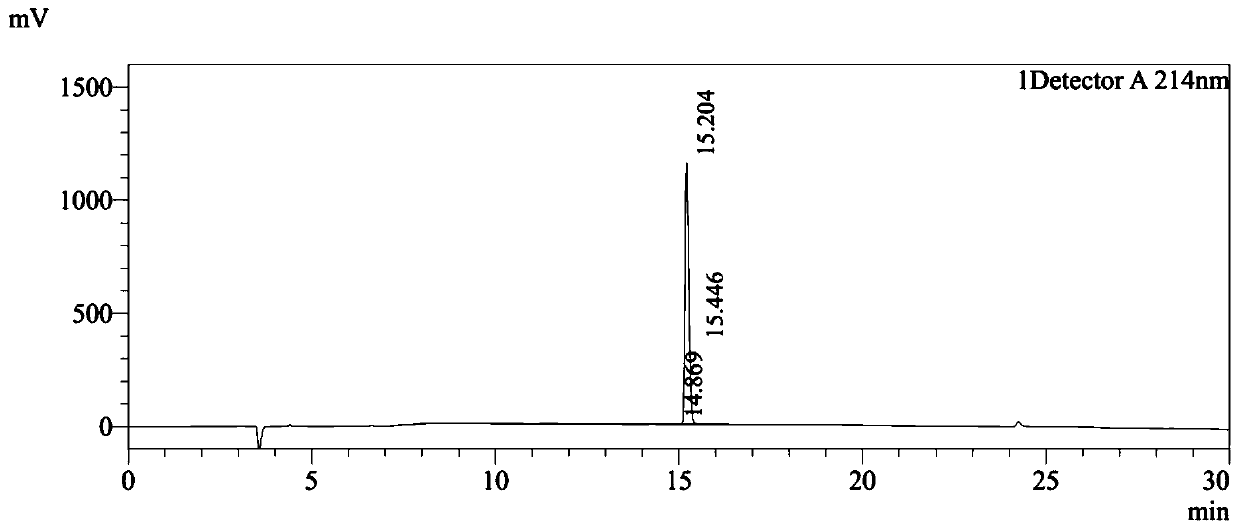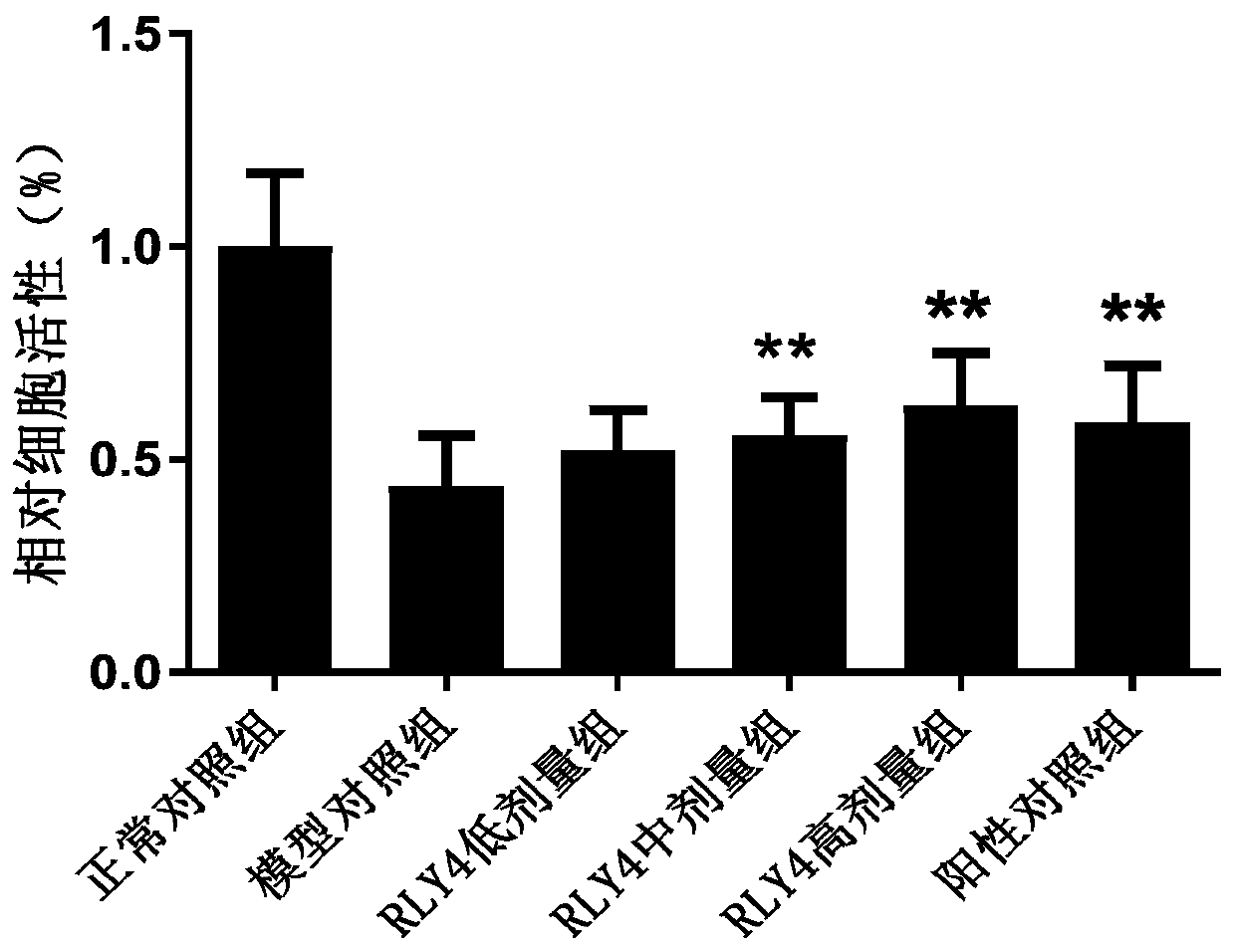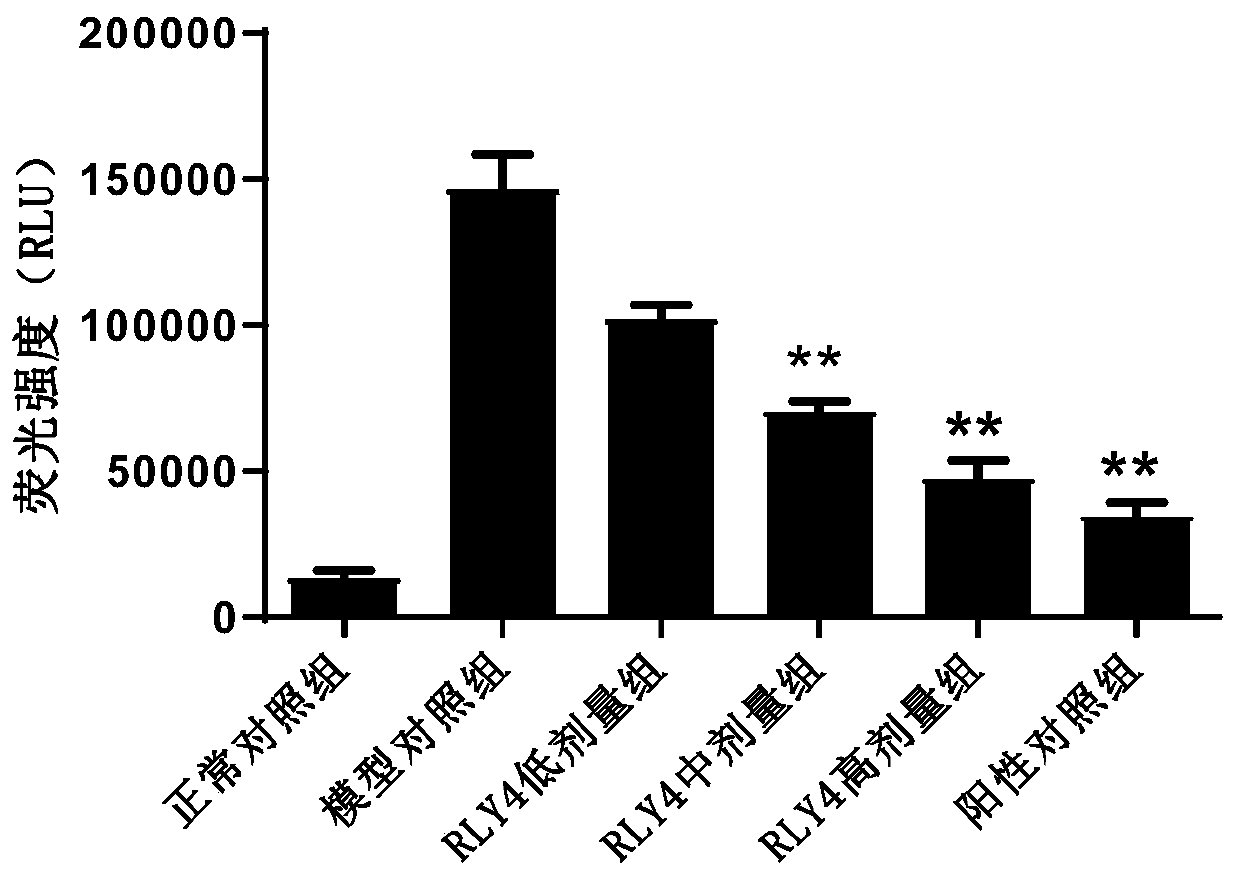Polypeptide RLY4 and uses thereof for promoting liver regeneration and inhibiting hepatocyte apoptosis
A liver cell and liver regeneration technology, applied in the field of cell proliferation and apoptosis, can solve the problems of RLY4 regeneration and inhibition of liver cell apoptosis, and achieve the effect of promoting liver cell proliferation, small molecular weight, and low immunogenicity
- Summary
- Abstract
- Description
- Claims
- Application Information
AI Technical Summary
Problems solved by technology
Method used
Image
Examples
Embodiment 2
[0042] Example 2 Detecting the Activity of Promoting Hepatocyte Proliferation in Vitro
[0043] In this example, the human liver cell line LO2 was purchased from ATCC.
[0044] In this example, the method for detecting the activity of the polypeptide RLY4 described in Example 1 in promoting the proliferation of liver cells in vitro is as follows:
[0045] After LO2 cells were revived according to conventional methods, they were placed at 37°C and 5% CO 2 In the incubator, culture with DMEM complete medium containing 10% FBS and 1% double antibody. When the cells have grown to about 85% of the bottom of the bottle, digest with trypsin-EDTA, add DMEM complete medium and blow gently to make a cell suspension, adjust the cell concentration, inoculate into a 96-well plate, 100 μL per well, Then place at 37°C, 5% CO 2 cultured in an incubator until use.
[0046] Inoculate LO2 in the logarithmic phase at a density of 5000 / well in a 96-well plate and culture for 24 hours. Divided...
Embodiment 3
[0048] Example 3 Detecting the Activity of Inhibiting Hepatocyte Apoptosis in Vitro
[0049] In this example, the method for detecting the activity of the polypeptide RLY4 described in Example 1 in inhibiting liver cell apoptosis in vitro is as follows:
[0050] Human hepatocytes HL-7702 were spread in 96-well plates, and the cell concentration was 1×10 5 cells / ml, 100 μl per well, that is, 1×10 cells per well 4 indivual.
[0051] Each well was treated with 20ng / mL actinomycin D2 (Act D2) for 30min and 80ng / ml tumor necrosis factor α (TNF-α) for 48h to establish the apoptosis model.
[0052] The corresponding polypeptide RLY4 was added for treatment, the dosing volume was 10 μl, and the final concentrations were 0.1, 1, and 10 μg / ml respectively, and the same volume of PBS was used as a negative control, and 0.2 μg / ml epidermal growth factor (EGF) was used as a positive control.
[0053] After 24 hours of drug treatment, add 100 μl to each well Reagent ( 3 / 7 provided by...
PUM
 Login to View More
Login to View More Abstract
Description
Claims
Application Information
 Login to View More
Login to View More - R&D
- Intellectual Property
- Life Sciences
- Materials
- Tech Scout
- Unparalleled Data Quality
- Higher Quality Content
- 60% Fewer Hallucinations
Browse by: Latest US Patents, China's latest patents, Technical Efficacy Thesaurus, Application Domain, Technology Topic, Popular Technical Reports.
© 2025 PatSnap. All rights reserved.Legal|Privacy policy|Modern Slavery Act Transparency Statement|Sitemap|About US| Contact US: help@patsnap.com



